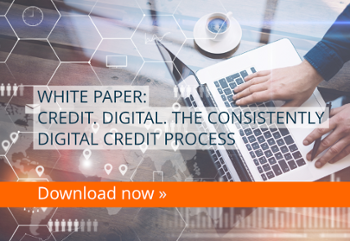
Multichannel- and omnichannel banking, digitalization of banking processes, customer support for the Digital Customer Journey – all these are key terms that have been increasingly addressed in the financial industry for a few years. But where does the journey lead to in the world of finance? Will digital banking ultimately displace local personal customer service even in the case of complex financial services, or is everything just a hype in the context of the omnipresent topic of digitalization? This is a subject of intense debate in the industry, one thing is certain now: ultimately, the customer will decide in what way he feels he is best supported and how he will manage his financial matters in the future.
In many service sectors, consumer demands and habits are changing fundamentally. The world wide web is omnipresent and has found its way into almost all areas of life. People born at the turn of the millennium, the millennials, no longer know a world lacking the internet. Web availability is as self-evident as electricity from the socket or water from the tap. But earlier generations, the so-called digital immigrants, also enjoy the luxury of being able to access information and services from anywhere at any time. They are also making increasing use of it – both in their private and business environments. Online shopping after work on the couch, checking the account balance at breakfast via mobile banking or comparing service providers on the way to work in the suburban railway via evaluation portals has become everyday life. Almost everyone is online, at least for information or communication. What does this development mean for the banking sector?
The more complex the financial product, the more the customer relies on personal service
A common opinion in the financial sector is that comprehensive financial services, such as mortgage lending, are too complex to be processed online. For this reason, such financial products will also require offline support in the long term. Studies, such as the representative ROPO study for banking products in Germany conducted by Postbank, Society for Consumer Research and Google in 2017, also seem to confirm this. Accordingly, only 3 % of building loan contracts and 12 % of mortgage loans are concluded online. In comparison: According to the study, 42 % of checking accounts and credit cards were applied for completely via the internet. One could conclude from that: The offline support has an overwhelming importance in the first-mentioned business fields, so digitalization efforts can be postponed. Or is there simply a lack of attractive offers and the banks are giving away valuable potential here?
Information culture is shifting to the internet also in the financial sector
Another result of the ROPO study: Before concluding a building loan contract with a local bank advisor, 82 % of customers informed themselves online, 76 % of mortgage loans were preceded by online-research. About 30 % of these online searches were conducted via mobile phone. At first glance, these statistics seem primarily interesting for the financial institution's marketing; attract attention online and present the product in an appealing way, then sell it offline. At best, everything mobile and responsive.
This development is not entirely surprising, as classic multichannel banking developed a few years ago: banks have begun to make their services available to customers via various access points, for example via an online platform for the desktop PC, an app for the smartphone or a customer chat. The aim was to meet the growing need for information via the internet and reach the young target group as quickly as possible before the competitors could acquire the digital natives. New departments were created, which were exclusively concerned with e-business. They developed individual solutions for less complex services in the banking sector, such as payment transactions or security trading – often based on insular technological solutions.
Offline customers were frequently not included in these considerations and were further managed in other systems.
The customer has digitized expectations
What emerges from the results of the ROPO study, though, is that a very large number of offline customers still go online to gather information or to make use of other services. This experience also leads to digital expectations. Ultimately, they want the personal trust relationship when making a financial decision that is profound for them, which is why personal support in this area will continue to play an important role for a long time to come. But they also expect transparent and flexible procedures, fast response times and a cross-channel information exchange, based on experience from other industries. In other words: The customer wants to be involved in the process and not be confronted with an accomplished fact, possibly after an unknown period of time.
Typical example: When a consumer orders a product, whether through a local retailer, by phone or via the web, he is used to being able to check online when his shipment is delivered, what the current processing status is and where his package is currently located. The day before the shipment arrives, he will be notified by e-mail or app, including the time window for delivery. If he is not at home during this period, he can still change the delivery address. The shipping process, which was still analog a few years ago, is now completely digital, transparent and flexible. The data exchange works beyond the boundaries of the individual service providers and business processes; the dealer, the distribution center and the shipping service provider are involved.
Service now means involving the customer
 Due to these everyday experiences, the demands on a service have changed dramatically from the customer's point of view. Even if a financing matter is preferably concluded with the customer advisor on site, the customer does not want to have to send further required documents by mail but would like to be able to upload them via an online application form. He wants to be able to view the status of his application online and expects an automated notification if an important status change occurs. If an entrepreneur has several credit exposures at the same bank, for example private and business, he expects that the information from all exposures will be included in the credit decision without having to submit all documents again.
Due to these everyday experiences, the demands on a service have changed dramatically from the customer's point of view. Even if a financing matter is preferably concluded with the customer advisor on site, the customer does not want to have to send further required documents by mail but would like to be able to upload them via an online application form. He wants to be able to view the status of his application online and expects an automated notification if an important status change occurs. If an entrepreneur has several credit exposures at the same bank, for example private and business, he expects that the information from all exposures will be included in the credit decision without having to submit all documents again.
In other words, he wants the best possible support during his customer journey. User experience, customer convenience and transparency have become the most important sales arguments in this scenario, even beating the lowest price for many customers.
From multichannel banking to omnichannel banking
To meet these demands, the evolution from encapsulated multichannel to linked omnichannel is required. The customer expects the consistency of his data across all channels, regardless of whether he edits it online, in the customer chat or discusses it with the customer advisor on site. The most important basis for this is that all data must be available in electronic format and centrally linked.
In return, the financial institution always knows exactly at which point of its customer journey the customer is and which service is a suitable solution.
Many FinTechs already adapt to the new requirements of their customers when planning their business model and have specialized in certain business areas in digital banking. Traditional banks, on the other hand, still have a lot of catching up to do in implementing digitalization across all business processes to offer a cross-channel user experience. This task should be tackled quickly, otherwise the predicted bank decline from the dystropic "Bank Report 2030" of the strategy consultancy Oliver Wyman will sooner or later find its predicted fulfilment.
Conclusion
Customer demands for financial services have changed dramatically in recent years. Increasing digitalization in all spheres of life has also created new expectations for financial service providers that cannot be met with an analog data storage system. Although complex financial services are still primarily concluded with a local customer advisor, the customer expects transparency in all process steps and the possibility of influence in this business area as well.
Supporting the customer throughout the entire customer journey requires consistent data management across all channel boundaries. Both business and process logic must be digitally mapped and intelligently linked to provide customers with comprehensive omnichannel banking. If this is implemented consistently, additional service opportunities for service providers and an effective instrument for sustainable customer loyalty will also be created.
Image Source: Teaser: Laurent Delhourme - 467194667 - iStock









